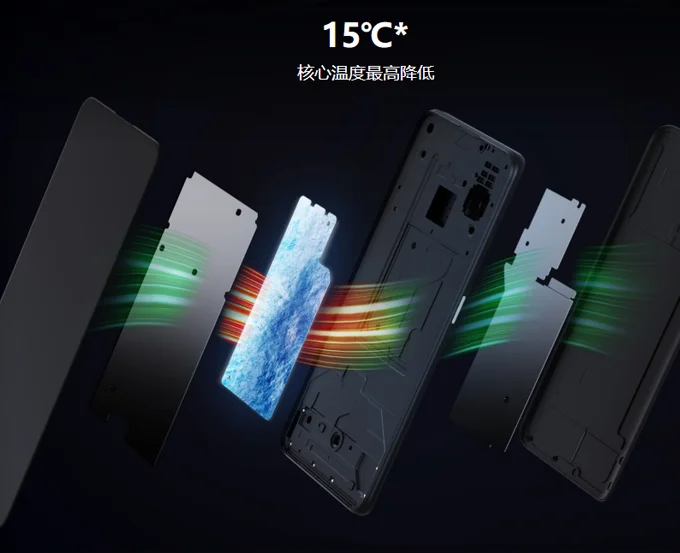What is vapor chamber?
Vapor chamber technology serves as a sophisticated thermal management solution similar to heat pipes, facilitating instantaneous heat transfer through the vaporization and condensation of a liquid. Unlike the commonly used graphite sheets in slim electronic devices, vapor chambers exhibit superior thermal conductivity, enabling rapid dissipation of heat.
With the anticipated proliferation of 5G-compatible devices, the surge in data processing demands for communication applications processors and integrated circuits necessitates efficient thermal solutions. Vapor chambers hold promise as thermal management solutions for compact electronic devices, fulfilling the requirements for thinner, high-performance, and energy-efficient heat dissipation components.
By integrating vapor chamber technology, these compact thermal solutions offer unparalleled advantages in heat management. The advanced design ensures uniform distribution of heat, effectively addressing the escalating thermal challenges in modern electronics.
As electronic devices continue to evolve toward higher performance and reduced form factors, vapor chamber technology emerges as a pivotal solution, meeting the demanding thermal requirements of next-generation electronic applications.
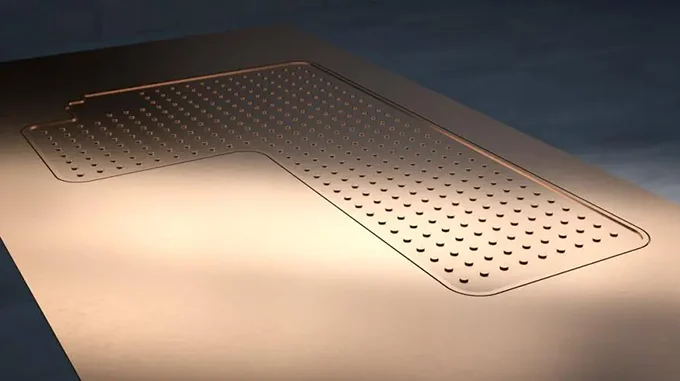
What is the structure of a vapor chamber?
The vapor chamber, resembling a flat panel with tightly sealed upper and lower covers and internal support pillars, employs high-conductivity materials such as oxygen-free copper for its top and bottom metal plates. Typically utilizing pure water as the working fluid, its intricate microstructure, crafted through processes like copper powder sintering or copper mesh, enhances heat transfer efficiency.
With its flat-panel design, the vapor chamber offers flexibility in shape and orientation, catering to various heat dissipation module configurations without strict limitations. In practical applications, it ensures uniform heat distribution, evidenced by temperature differentials typically below 10°C between any two points on its surface, surpassing traditional heat pipes in uniformity. The term “vapor chamber” stems from this uniform heat conduction capability.
Common vapor chambers exhibit a thermal resistance value of around 0.25°C/W, suitable for temperature ranges spanning from 0°C to 100°C.
How does a vapor chamber work?
Vapor chamber integrates intricate internal microstructures within its vacuum-sealed enclosure, typically constructed from copper. These microstructures facilitate efficient heat transfer by promoting the rapid vaporization and condensation of the cooling fluid within the low-pressure environment of the chamber.
The circulation of the cooling fluid within the vapor chamber plays a crucial role in thermal management. As heat is conducted from the heat source to the evaporation zone, the cooling fluid undergoes phase change, transitioning from liquid to vapor.
This phase change process absorbs heat energy, causing the fluid to expand rapidly and fill the chamber with vapor. Subsequently, when the vapor encounters a cooler region, it condenses back into liquid form, releasing the accumulated heat energy.
Guided by the microstructured pathways, the condensed coolant flows back to the evaporation zone, perpetuating this cycle of heat absorption, vaporization, condensation, and fluid recirculation within the chamber.
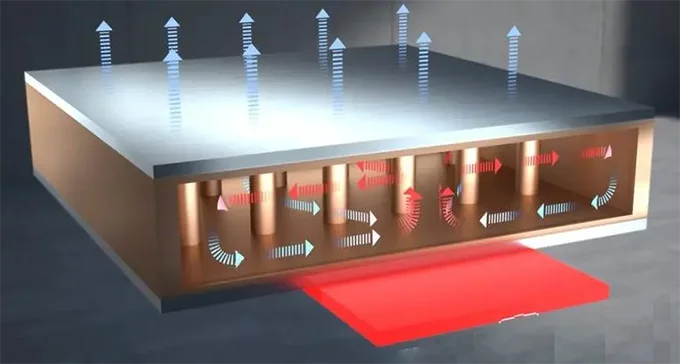
What is the difference between a vapor chamber and a heat sink?
Vapor Chamber:
Advantages:
– Extremely high thermal conductivity, capable of efficiently transferring large amounts of heat while maintaining a thin profile.
– Due to its flat shape, it can rapidly disperse heat over a wide area, maintaining efficiency even when the heat source is elevated.
Disadvantages:
– Relatively higher cost compared to other heat dissipation components.
Heat Sink:
Advantages:
– Low cost with good heat dissipation capability.
Disadvantages:
– Lower thermal conductivity, larger volume, making miniaturization or thinning difficult.
– Risk of short circuits if made of metal.
Heat Pipe:
Advantages:
– Extremely high thermal conductivity.
Disadvantages:
– Due to structural constraints, requires a certain thickness, making thin designs difficult.
– Efficiency may decrease if the heat source is elevated, and unable to effectively spread heat over a large area due to its cylindrical shape.
Graphite Sheet:
Advantages:
– Lightweight, can be made very thin and flexible, with electromagnetic shielding capabilities.
Disadvantages:
– Lower thermal conductivity compared to heat pipes and vapor chambers, carrying less heat.
– Conductive, which may affect electronic circuits, especially if the sheet contains fine powder substances.
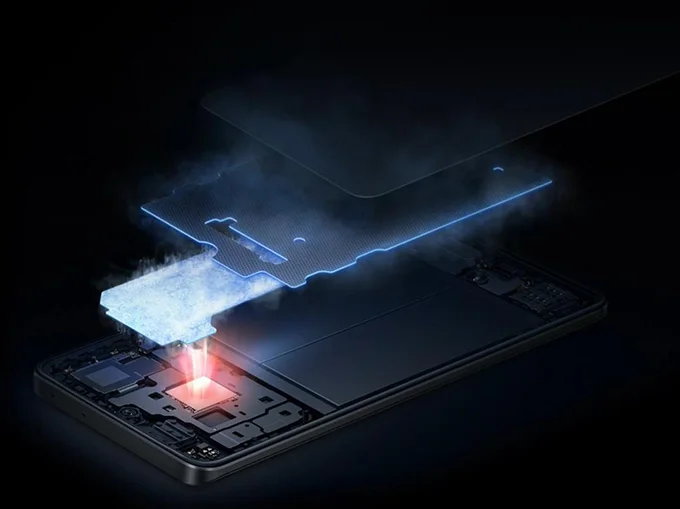
What are vapor chambers used in?
Mobile, Head-Mounted, and Sensor Devices:
As the electronics industry moves towards miniaturization, the demand for advanced thermal management technologies, especially vapor chamber technology, becomes increasingly stringent. Consumer electronic products like mobile devices and head-mounted displays, tailored for virtual, augmented, and mixed reality users, require chip cooling solutions capable of handling high-level heat flux.
With the market dominance of 5G-compatible devices, the utilization of vapor chamber technology to augment processing capabilities becomes ever more crucial. As data loads surge, heat dissipation must become more efficient and installations more dynamic, as devices need to occupy increasingly confined spaces.
Vapor chambers offer unparalleled heat dissipation capabilities, operating in spaces where traditional heat pipes cannot be installed. For wearable devices, this enables greater miniaturization and sleeker designs, focusing on comfort and user-friendly features without compromising on necessary heat dissipation.
Electronics employing vapor chamber technology may possess non-linear, extremely narrow profiles, and adaptability to various shapes, offering flexibility without sacrificing user comfort for the sake of effective heat dissipation.
Laptop Applications:
As the global trend of remote work rises, digital nomads seek more convenient, efficient, and portable ways to stay connected or disconnected beyond traditional power environments.
Vapor chamber technology has proven to be an essential tool for transitioning to laptops. In laptops, heat conduction and transfer typically occur through component contact with the substrate, wiring, or circuit boards. Heat is also transferred to the air through convection and radiation.
For laptops, vapor chambers are combined with traditional heat dissipation technologies such as graphite sheets, heat pipes, and heat sinks to further enhance heat transfer speed. Adding vapor chambers enables faster heat dissipation over a larger area.
Given the limited internal space of laptops, vapor chambers can efficiently operate within these confines, transferring heat to strategically placed heat sinks near ventilation points without the need for additional external power sources.
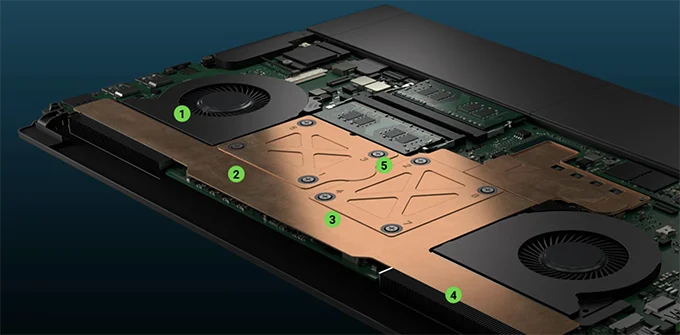
What is the manufacturing process of vapor chambers?
1. Chemical Etching: The process initiates with precise chemical etching of metal sheets, forming intricate patterns like microchannels and wicking structures crucial for efficient heat transfer within the vapor chamber.
(With TMN’s advanced chemical etching technology, we offer professional customization of vapor chambers in various shapes, sizes, and metal materials.)
2. Welding: Multiple etched metal sheets are meticulously welded together using advanced techniques, ensuring a seamless and robust construction capable of withstanding thermal and mechanical stresses.
(Post-etching, vapor chambers can also undergo welding, surface treatment, and other secondary processing.)
3. Bonding: Additional layers or components such as cover plates or input/output ports are bonded to the vapor chamber assembly using high-strength adhesives or bonding processes, ensuring a secure and hermetic seal.
4. Quality Control: Rigorous quality control measures are implemented throughout the manufacturing process to ensure dimensional accuracy, surface finish, and overall performance of the vapor chamber assembly.
5. Testing and Validation: Following assembly, vapor chambers undergo comprehensive testing and validation procedures to verify thermal performance, pressure integrity, and overall reliability, meeting the stringent requirements of diverse applications.
Experience the precision and reliability of vapor chambers crafted through advanced manufacturing techniques such as chemical etching and welding, engineered to deliver superior thermal management solutions across various industries.


